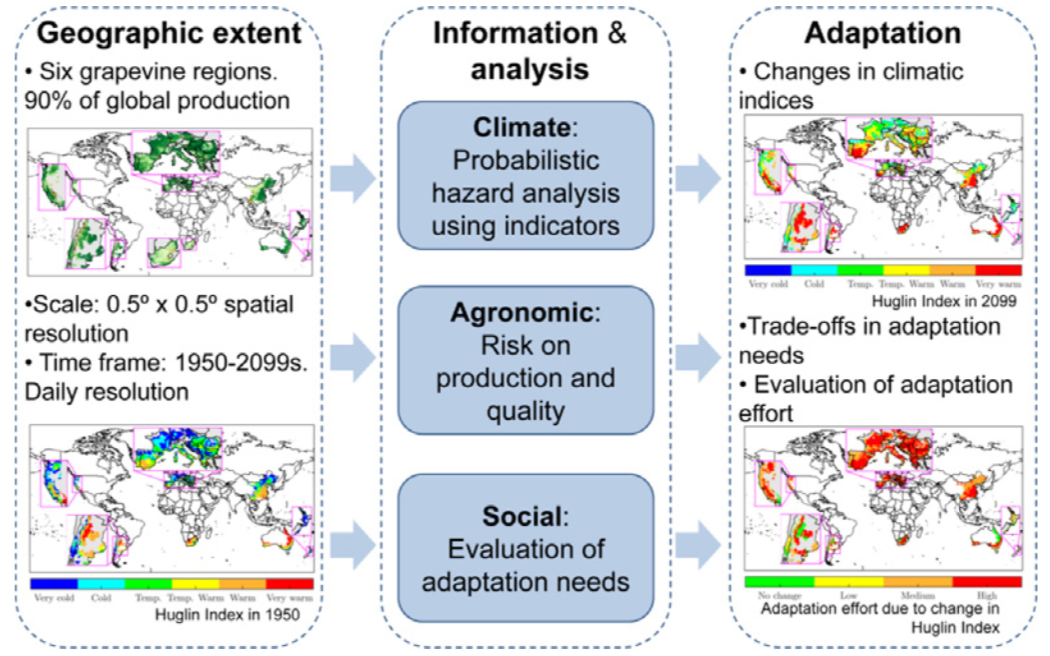Highlights
- Climate change will transform grapevine production and policy.
- Thermal suitability of grapevine may be greatly affected in China and the Mediterranean region.
- The possibility of quality wines is not altered within the regions with suitability.
- A lack of water to maintain current levels of production is detected in all regions.
- The Mediterranean region requires the largest adaptation efforts.
Graphical abstract

Abstract
This paper suggests how climate change may transform vineyards. We consider changes in agro-climatic indica- tors derived from climatic variables as drivers for adaptation needs. We use two climate scenarios, GCM GFL- ESM2M and HadGEM2-ES, with 0.5° spatial resolution and daily time step forced by two emission scenarios, RCP2.6 and 6.0, to estimate the transition of potential vineyards in the major grape production world areas by the late 21st century. We present and discuss changes in three impact indicators – one drought indicator and two temperature ones – aimed at exploring the benefits of transition-based policies. The drought indicator pro- vides insights to prepare adaptation for extreme events in probabilistic terms. The temperature indicators offer information on the transition towards suitable zones of production. Future projections suggest a lack of water to maintain current levels of production in all regions of the world. Furthermore, thermal suitability of grapevine may be greatly affected in China and the Mediterranean region. Nevertheless, the possibility of quality wines is not altered within the regions with adequate suitability. Lastly, a portfolio of strategies to adapt to the future climate is presented.
Santillán D, Iglesias A, La Jeunesse I, Garrote L, Sotes V (2019) Vineyards in transition: A global assessment of the adaptation needs of grape producing regions under climate change, Science of The Total Environment, 657, 839–852. doi: 10.1016/J.SCITOTENV.2018.12.079.
